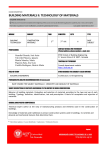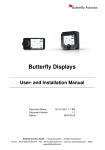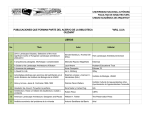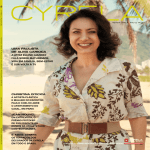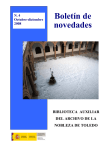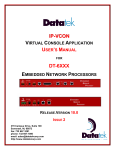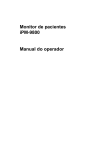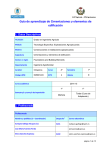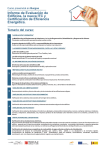Download Modelo normalizado de ficha para asignaturas
Transcript
COURSE DESCRIPTION BUILDING MATERIALS II: TECHNOLOGY OF MATERIALS ACADEMIC YEAR 2012-13 This document has been translated at the beginning of the course and may suffer some changes throughout the academic year or next. Use it only for information or guidance. To see modifications, consult the updated Spanish version. MÓDULE BUILDING TECHNOLOGY SUBJECT YEAR CONSTRUCTION MATERIALS 2nd PROFESSOR(S) Raquel Fuentes García (958-243127, [email protected]) José Guardia Olmedo(958-243125, [email protected]) José Jiménez Benavides (958 246173) María Martín Morales (958-240051, mariam @ugr.es) José Luís Piqueras Sala (958-243124, [email protected]) José Mª Ruíz Sánchez (958- 243126, [email protected]) Pedro Sáez de Tejada Martín ( 958-246101, [email protected]) Ignacio Valverde Espinosa (958-243127, [email protected]) Ignacio Valverde Palacios (958-243126, [email protected]) DEGREE WHICH IMPARTS IT SEMESTER ECTS 3rd (1st) TYPE 6 OBLIGATORY CONTACT DETAILS FOR TUTORSHIP (Postal address, phone number, e-mail, etc.) ETSIE School of Building Engineering C/ Severo Ochoa S/N 18071, Granada TIMETABLE OF TUTORSHIP OTHER DEGREES IT CAN BE APPLIED TO BUILDING ENGINEERING PREREQUISITES AND/OR RECOMMENDATIONS (if necessary) HAVE STUDIED THE SUBJECT MATERIALS I: CHEMISTRY AND GEOLOGY OF MATERIALS SHORT DESCRIPTION OF CONTENTS (ACCORDING TO THE REPORT OF DEGREE VERIFICATION) Behavior of building materials. Evaluation and selection of materials according to the typology and use of building. Typology, definition, identification, trial and prescription. Criteria for acceptance and rejection of materials. GENERAL AND SPECIFIC COMPETENCES Advise technically during manufacturing processes of products and elements used in the construction of buildings. Knowledge of materials and traditional or prefabricated construction systems used in buildings, its varieties and physical and mechanical characteristics that defines them. Students will be expected to: Página 1 Prove knowledge and skills in the area of materials, on the basis of knowledge gained in secondary school and supported by advanced books Know how to apply gained knowledge to their work in a professional way, and have skills that can be proved during preparation, defense of their arguments and solving problems and exercises related to their field of studies. Have the ability to gather and interpret relevant data to make judgments that include reflection on relevant social or ethical issues. Be able to transmit information, ideas, problems and solutions to both specialist and non-specialist public. Develop those abilities of studying, necessary to undertake further studies with higher level of autonomy. Based on this, the following competences are defined, classified into transverse, generic and specific competences, of disciplinary or professional training. TRANSVERSE (GENERIC) COMPETENCES Taking into account the fundamental rights of equal opportunities between man and women (Law 3/2007, March, 22, for effective equality of women and men), the principles of equal opportunities and universal access for people with disabilities (Law 51/2003, December, 2, on equal opportunities, non-discrimination and universal accessibility for disabled persons) and the values of the culture of peace and democracy (law 27/2005, November, 30, promotion of education and culture of peace), we define the following generic skills: INSTRUMENTAL Ability of organization and planning Solving problems Taking decisions Oral and written communication in the native language Ability of analysis and synthesis Computer skills related to the field of study Ability to manage information Knowledge of a foreign language PERSONAL Teamwork Ethical commitment Critical thinking Working in an interdisciplinary team Working in an international context Interpersonal skills Recognition of diversity and multiculturalism SYSTEMIC Sensitivity towards environmental issues Concern for the quality Adapting to new situations Autonomous studying Initiative and enterprising spirit Leadership Knowledge of other cultures and customs Creativity OTHER TRANSVERSE (GENERIC) COMPETENCES Orientation on results Página 2 Orientation on clients BASIC ACADEMIC COMPETENCES Ability to improvise and adapt to deal with new situations Positive attitude towards social and technological innovations Ability of reasoning, discussion and presentation of own ideas Ability to communicate through Word and image Study habit and working methods Ability to search, analyze and select information OBJECTIVES (EXPRESSED AS EXPECTED RESULTS OF EDUCATION) Knowledge of materials and traditional or prefabricated construction systems used in buildings, its varieties and physical and mechanical characteristics that define them. Ability to adapt building materials to typology and use of the building, manage and direct the reception. Knowledge about behavior of building materials, in traditional or advanced construction systems. Ability to evaluate and select basic and prefabricated construction materials, according to typology, location and use of building. Knowledge of different typologies, definitions, identifications, trials and prescriptions. Ability to evaluate and criteria of acceptance and rejection. DETAILED LIST OF SUBJECT´S TOPICS THEORY TOPICS: TOPIC 1. BUILDING MATERIALS AND TRADITIONAL CONSTRUCTION SYSTEMS TOPIC 2. CONCRETE AND ITS COMPONENTS TOPIC 3, MORTARS TOPIC 4. METALIC MATERIALS TOPIC 5. MATERIALS OF ORGANIC ORIGIN: WOOD TOPIC 6. LOW-THICKNESS COVERING: PAINT TOPIC 7. BITUMINOUS PRODUCTS TOPIC 8. CERAMIC PRODUCTS TOPIC 9. GLASS Topic 1. Materials and traditional construction systems. Introduction. The earth as a construction material. Control of contribution grounds. Masonry constructions and load-bearing walls. Wood as a structural element. Topic 2. Concrete and its components. Introduction. Definitions. Types of concrete: lightweight, heavy, reinforced, high resistance, shotcrete, recycled, white and colored. Concrete components: cement, water, aggregates, additives and additions. Properties of fresh concrete: consistence, docility, homogeneity, setting, density. Properties of hardened concrete: compactness, permeability, density, retraction, compression strength, compressive strength, erosion resistance. Concrete durability. Prefabricated products of structural concrete. Prefabricated product of not prefabricated concrete. Topic 3. Mortars. Introduction. Definitions, types and classification. Components. Regulations. Página 3 Topic 4. Metallic materials. Introduction. Basic properties of materials: metallic state, mechanical properties, physical properties, weldability, corrosion. Classification and denomination of iron metals: steel framework for concrete, electro-welded chains and steel products for metallic structures. Not iron metals useful in buildings. Prefabricated products. Topic 5. Plant origin materials: wood. Introduction. Physical and mechanical properties of Wood. Degradation, defects and pathology of wood. Use of Wood in the buildings. Topic 6. Low thickness coating: paints. Introduction. Definitions. Constituents. Properties. Types of paints. Applications. Topic 7. Bituminous and plastic products. Introduction. Definitions. Types. Applications, Topic 8. Ceramic products, Introduction. Basic properties. Types of ceramic products used in buildings. Topic 9. Glass. Introduction. Basic properties. Types. Applications. PRACTICAL TOPICS: - Exercises related to calculation of physical and mechanical parameters of construction products. -Seminars: - Industrial novelties for the construction products. -Laboratory exercises: -Recognition of construction products -General properties of construction products: physical, hydrophysical, chemical and mechanical. -Field trips - Factory visits - Site visits and expositions at shops and warehouses with construction products. BIBLIOGRAPHY AGUADO ALONSO, L. Humedades en la edificación, control de calidad en la impermeabilización. Colegio Oficial de Aparejadores y Arquitectos Técnicos de Madrid. Madrid (1997). AITEMIN. Patología de las piezas cerámicas y nuevas tendencias en la edificación. Aitemin. Toledo (2004). ALEJANDRE SÁNCHEZ, F.J. Historia, caracterización y restauración de morteros. Universidad de Sevilla. Sevilla (2002). ANDREU X. La madera. Biblioteca Atrium de la madera. Tomo I. Ed. Atrium, Barcelona ARCOS MOLINA, J. Los materiales básicos de la construcción. 2ª edn. Progensa. Sevilla (2007). ARES I RÍO, J.A. El metal: técnicas de conformado, forja y soldadura. Parramón. Barcelona (2004). ARRIAGA MARTITEGUI, F., PERAZA SÁNCHEZ, F. and ESTEBAN HERRERO, M. Madera aserrada estructural. Asociación de Investigación Técnica de las Industrias Página 4 de la Madera y Corcho. Madrid (2003). ASOCIACIÓN CIENTÍFICO TÉCNICA DEL HORMIGÓN ESTRUCTURAL, Manual de tecnología del hormigón reforzado con fibras de acero. ACHE. Madrid (2000). ASOCIACIÓN CIENTÍFICO-TÉCNICA DEL HORMIGÓN ESTRUCTURAL. COMISIÓN 2, GRUPO DE TRABAJO 2/3. Manual de tecnología de aditivos para hormigón. ACHE. Madrid (2010). ASOCIACIÓN CIENTÍFICO-TÉCNICA DEL HORMIGÓN ESTRUCTURAL. COMISIÓN 2.GRUPO DE TRABAJO 2/2 "HORMIGÓN AUTOCOMPACTANTE" and GONZÁLEZ TORIJANO, L.P. Hormigón autocompactante: diseño y aplicación. ACHE. Madrid (2008). ASOCIACIÓN ESPAÑOLA DE NORMALIZACIÓN Y CERTIFICACIÓN. Acero para hormigón. AENOR. Madrid (2002). ASOCIACIÓN ESPAÑOLA DE NORMALIZACIÓN Y CERTIFICACIÓN. Á Aridos". AENOR. Madrid (2004). ASOCIACIÓN ESPAÑOLA DE NORMALIZACIÓN Y CERTIFICACIÓN. Diccionario tecnológico de pinturas. AENOR. Madrid (1999). ASOCIACIÓN ESPAÑOLA DE NORMALIZACIÓN Y CERTIFICACIÓN. Estructuras de madera. AENOR. Madrid (2001a). ASOCIACIÓN ESPAÑOLA DE NORMALIZACIÓN Y CERTIFICACIÓN. Geotecnia: ensayos de campo y de laboratorio. AENOR. Madrid (1999). ASOCIACIÓN ESPAÑOLA DE NORMALIZACIÓN Y CERTIFICACIÓN. Impermeabilización: Puesta en obra. AENOR. Madrid (2001b). ASOCIACIÓN ESPAÑOLA DE NORMALIZACIÓN Y CERTIFICACIÓN. Madera estructural. AENOR. Madrid (2003). ASOCIACIÓN ESPAÑOLA DE NORMALIZACIÓN Y CERTIFICACIÓN. Soldadura: ensayos y pruebas. 2ª edn. AENOR. Madrid (2004). ASOCIACIÓN ESPAÑOLA DE NORMALIZACIÓN Y CERTIFICACIÓN. Ventanas, puertas, persianas, herrajes, fachadas ligeras y vidrio para la edificación. AENOR. Madrid (2000). ASOCIACIÓN ESPAÑOLA DE NORMALIZACIÓN Y CERTIFICACIÓN and ASOCIACIÓN NACIONAL DE FABRICANTES DE IMPERMEABILIZANTES ASFÁLTICOS. Manual de impermeabilización con láminas asfálticas en cubierta metálica. 2ª edn. AENOR. Madrid (2007). ASOCIACIÓN NACIONAL DE FABRICANTES DE MORTERO. MORTEROS DE ALBAÑILERÍA, Morteros especiales: normas UNE / Asociación Nacional de Fabricantes de Mortero. AENOR. Madrid (2004). A.T.E.G.: Prontuario del acero galvanizado. Editado por la ATEG, s.f. BARRIOS J., VALVERDE I. : Hormigón. Ed. CSV. Granada (2001). BARRIOS J., VALVERDE I. : Metales. Ed. CSV. Granada (2003). BARRIOS. A, BARRIOS.J, VALVERDE. I. : La Construcción con Hormigón Armado. Ed. CSV. Granada (2009). BASTERRA OTERO, L.A. Construcción de estructuras de madera. Universidad de Valladolid. Valladolid (2009). BENTLEY, J., TURNER, G.P.A., MADRID VICENTE, A. and MADRID CENZANO, A. Química y tecnología de pinturas y revestimientos. Madrid Vicente. Madrid (1999). BIRON, M. Thermoplastics and thermoplastic composites: technical information for plastics users. MA: Butterworth-Heinemann. Burlington (2007). Página 5 BOSCH GONZÁLEZ, M., GIRÓ, V. and MUÑOZ, M.V. Paramentos: nuevos revestimientos. Universidad Politécnica de Cataluña. Barcelona (2002). BRAY, C. Dictionary of glass: materials and techniques. 2 edn. University of Pennsylvania Press. Philadelphia (2001). BUSTILLO REVUELTA, M. Hormigones y morteros. Fueyo editores. Madrid (2008). CALAVERA RUIZ, J. Armaduras pasivas para hormigón estructural: recomendaciones sobre el proyecto, detalle, elaboración y montaje. 2ª re edn. Calidad Siderúrgica. Madrid (2001). CALAVERA RUÍZ, J. Patología de estructuras de hormigón armado y pretensado. 2ª edn. Instituto Técnico de Materiales y Construcciones. Madrid (2005). CALIDAD SIDERÚRGICA. Perfiles, barras y chapas de acero laminados en caliente para aplicaciones estructurales. Madrid (2008a). CALIDAD SIDERÚRGICA. Productos de acero para hormigón. Madrid (2008b). CALVO CARBONELL, J. and MARTÍNEZ GUASCH, M. Pinturas y recubrimientos: introducción a su tecnología. Díaz de Santos. Madrid (2009). CASTRO E., GARCÍA CASTAN J., GARCÍA W. y LALOUMET E.: Manual de la pintura en construcción. Editado por la A.S.I.C. CEYSA. Manual de soldadura por arco eléctrico: con electrodo recubierto (M.M.A.). 2ª edn. CEYSA. Barcelona (2008). COBO ESCAMILLA, A. Corrosión de armaduras de estructuras de hormigón armado, causas y procedimientos de rehabilitación. Fundación Escuela de la Edificación. Madrid (2001). COMISIÓN INTERMINISTERIAL PERMANENTE PARA EL ESTUDIO Y REDACCIÓN DE LAS NORMAS DE MATERIALES DE CONSTRUCCIÓN. Recepción de materiales constructivos en la edificación. EDIATEC. Madrid (2001). COMPAGNO, A. and KALTENBACH, F. Materiales traslúcidos: vidrio, plástico, metal. Gustavo Gili. Barcelona (2007). CUESTA ARRANZ, A. Tecnología láser y sus aplicaciones industriales. Marcombo. Barcelona (2010). CUETO, J. Manual de soldadura: MIG-MAG (hilo continuo). 3ª edn. Cano Pina. Barcelona (2008a). CUETO, J.Manual de soldadura TIG. 2ª edn. CEYSA. Barcelona (2008b). DE MIGUEL ARBONES, E.M. and UNIVERSIDAD POLITÉCNICA DE VALENCIA, 2010. Arquitecturas cerámicas. Editorial UPV. Valencia (2009). DÍEZ BARRA, M.R., HERMOSO PRIETO, E., MIER PÉREZ, R. and FERNÁNDEZ-GOLFÍN SECO, J.I. Manual de clasificación de madera. Asociación de Investigación Técnica de las industrias de la Madera y Corcho. Madrid (2003). ENGELSMANN, S., SPALDING, V. and PETERS, S. Plastics: in architecture and construction. Birkhaeuser. Basel (2010). FERNÁNDEZ CÁNOVAS, M. Materiales bituminosos. 2ª edn. Revista de Obras Públicas Servicio de Publicaciones. Madrid (1998). FERNÁNDEZ CÁNOVAS M.: Las resinas epoxi en la construcción. 2ª Edición. Ed. por el Instituto Eduardo Torroja, Madrid (1.981). FERNÁNDEZ DEL CAMPO J.A. : Pavimentos bituminosos en frío. Editores Técnicos Asociados, Barcelona (1.983). FERNÁNDEZ GARCÍA, D. Manual técnico de arquitectura y construcción: materiales cerámicos. Ed 2002 edn Daly. Fuengirola Málaga (2002). Página 6 FERNÁNDEZ NAVARRO, J.M. El vidrio. 3ª edn. Consejo Superior de Investigaciones Científicas. Madrid (2003). FINANCIERA Y MINERA, ITALCEMENTI GROUP. Durabilidad del hormigón. Financiera y Minera. Málaga (1997). FISCHER, J. Concrete = Hormigón = Betão. Ullmann. Köll (2009). GARCÉS TERRADILLOS, P., CLIMENT LLORCA, M. and ZORNOZA GÓMEZ, E. Corrosión de armaduras en estructuras de hormigón armado. Club Universitario. Alicante (2008). GARCÍA DE MIGUEL, J.M. Tratamiento y conservación de la piedra, el ladrillo y los morteros en monumentos y construcciones. Consejo General de la Arquitectura Técnica de España. Madrid (2009). GARCÍA ESTEBAN, L. La madera y su anatomía: anomalías y defectos, estructura microscópica de coníferas y frondosas, identificación de maderas. Fundación Conde del Valle de Salazar. Madrid (2003). GARCÍA ESTEBAN, L. La madera y su tecnología: aserrado, chapa, tableros contrachapados. Fundación Conde del Valle de Salazar. Madrid (2002). GARCÍA FERNÁNDEZ, C., APARICIO GUISADO, J., FERRATER, C. and UNIVERSIDAD POLITÉCNICA DE MADRID. Ensayos sobre arquitectura y cerámica =Essays on architecture and ceramics. Mairea Libros. Madrid (2009). GARCÍA MESEGUER, A. Estructuras de hormigón armado. Fundación Escuela de la Edificación. Madrid (2001). GARRIDO HERNÁNDEZ, A. EHE-08 instrucción de hormigón estructural y RC-08 instrucción para la recepción de cementos: incluye comentarios a las principales novedades de la EHE 2008 por Antonio Garrido Hernández. La Ley. Madrid (2009). GONZÁLEZ FERNÁNDEZ, J.A. and MIRANDA VIDALES, J. Corrosión en las estructuras de hormigón armado: fundamentos, medida, diagnosis y prevención. Consejo Superior de Investigaciones Científicas. Madrid (2007). HANONO, M. Construcción en madera. CIMA. Río Negro, Argentina (2001). HARPER, C.A. Handbook of plastics technologies: the complete guide to properties and performance. McGraw-Hill. New York, (2006). HENDRY, A.W. Structural masonry. Macmillan Press. London (1998). HORTA ZUBIAGA, A. Los plásticos más usados. Universidad Nacional de Educación a Distancia. Madrid (2000). HUGUES, T., GREILICH, K. and PETER, C. Building with large clay blocks: details, products, built examples. Birkhäuser, Basel (2004). HUGUES, T., STEINER, L. and WEBER, J. Construcción con madera: detalles, productos, ejemplos. 1ª 2ª tirada edn. Gustavo Gili. Barcelona (2009). HURTADO MINGO, C. and ASOCIACIÓN PARA LA PROMOCIÓN TÉCNICA DEL ACERO. Estructuras de acero en edificación. Apta. Madrid (2008). HURTADO, C. and VEGA, R. Construcción en acero: sistemas estructurales y constructivos en edificación. Munilla-Leria. Madrid (2010). INSTITUTO DE CIENCIAS DE LA CONSTRUCCIÓN EDUARDO TORROJA. Sistema de impermeabilización líquida para cubiertas KIMPER-KIMI RED. Instituto Eduardo Torroja. Madrid (2002). JEFFUS, L. and PIQUER CABALLERO, J. Manual de soldadura GTAW (TIG). Paraninfo Madrid (2008). JIMÉNEZ PERIS, F.J., CUEVAS ESPINOSA, I. and MORALES MÉNDEZ, E. Madera laminada encolada estructural (MLE): resistencia al fuego y características Página 7 mecánicas. @Becedario. Badajoz (2006). JIMÉNEZ SALAS, J.A. de Justo Alpañés, Alcibiades A. Serrano González. Geotecnia y cimientos. Rueda. Alcorcón-Madrid (1981). KATIME AMASHTA, I.A., KATIME TRABANCA, O. and KATIME TRABANCA, D. Introducción a la ciencia de los materiales polímeros: síntesis y caracterización. Universidad del País Vasco, Servicio Editorial. Lejona, Vizcaya (2010). KRAEMER C. y del VAL M.A.: Firmes, Ed. Servicio de Publicaciones. Revista Obras Públicas, Madrid (1.990). LARBURU ARRIZABALAGA, N. Acero laminado: prontuario: construcciones metálicas. Paraninfo. Madrid (2004). LE BOURHIS, E. Glass: mechanics and technology. Wiley-VCH. Weinheim, Germany (2009). LINZ, B. Wood = Madera = Madeira. Ullmann. Königswinter (2009a). LINZ, B. Glass = Vidrio = Vidro.. Ullmann. Königswinter (2009b). LOBJOIS, C. Uniones y soldaduras: provisionales y permanentes. CEAC. Barcelona (2004). LÓPEZ AGÜÍ, J.C. Nuevas especificaciones del hormigón y su resistencia: bases de control. AENOR Ediciones. Madrid (2010). MADRID VICENTE, A. Pinturas y revestimientos: manual práctico. 1ª edn. Antonio Madrid Vicente. Madrid (2010). MARI, E.A. Los materiales cerámicos. Un enfoque unificador sobre las cerámicas tradicionales y avanzadas, los vidrios, los cementos, los refractarios y otros materiales inorgánicos no metálicos. Librería y Editorial Alsina. Buenos Aires (1998). MCCAULEY, R.A. and MCCAULEY, R.A. Corrosion of ceramic and composite materials. 2 edn. M. Dekker. New York (2004). MARTÍ I AMELA, M.C. BALLARÍN I BARGALLÓ, J. Madera: la madera en arquitectura e interiores. Loft. Barcelona (2010). MAS TOMÁS, A. and CUBEL ARJONA, F. Cerramientos de obra de fábrica: diseño y tipología. Universidad Politécnica de Valencia. Valencia (2004). MEDINA SÁNCHEZ, E. Construcción de estructuras de hormigón armado en edificación. Bellisco. Madrid (2009). MONTERO FERNÁNDEZ DE BOBADILLA, E. Puesta en obra del hormigón: exigencias básicas. Consejo General de la Arquitectura Técnica de España. Toledo (2006). MORALES GÜETO, J. Tecnología de los materiales cerámicos. Díaz de Santos. Madrid (2005). NAVAJAS RAMÍREZ, P. and LÓPEZ ROMERO, A. Protección y durabilidad de las estructuras de acero. 2ª (rev capítulo 3) edn. Apta. Madrid (2009). ORTIZ GUTIÉRREZ, J. Carpintería de madera. 2ª edn. Fundación Escuela de la Edificación. Madrid (2004). PARICIO ANSUATEGUI, I. El vidrio estructural. Bisagra. Barcelona (2000). PELLICER DAVIÑA, D. Revestimientos y pinturas. CIE Dossat 2000. Madrid (2003). PERO SANZ ELORZ, J.A. Ciencia e ingeniería de materiales: estructura, transformaciones, propiedades y selección. 5ª edn. Dossat. Madrid (2006). PORCAR RAMOS, J.L. Defectos y disfunciones en alicatados y solados: diagnosis y prevención. 1ª edn. Ediceram. Castellón (2005). Página 8 PUERTA GARCÍA, A. Elementos de edificación: revestimientos cerámicos. 1ª edn. Fundación Escuela de la Edificación. Madrid (1997). REICHEL, A., KÖPE, C. and HOCBERG, A. Enlucidos, revocos, pinturas y recubrimientos: detalles, productos, ejemplos. Gustavo Gili. Barcelona (2007). REINA GÓMEZ, M. and RANNINGER, C. Soldadura de los aceros: aplicaciones. 4ª edn. Weld Work. Madrid (2003). RIERA OJEDA, O., PASNIK, M., WARCHOL, P., LACASA MARTÍN, COLOMBO, L., SOARDI, L. and ROCHA, V.M. Elements in architecture: materiales = materiali = materiais. Taschen. Köln, Germany (2008). RODRÍGUEZ MORA, O. Morteros: guía General. Asociación Nacional de Fabricantes de Mortero. Madrid (2003). RODRÍGUEZ SALGADO, D. Soldadura: tecnología y técnica de los procesos de soldadura. 2ª edn. Bellisco. Madrid (2010). RODRÍGUEZ SALGADO, D. Formulario técnico de soldadura. 1ª edn. Bellisco. Madrid (2006). SCHWEIGGER, E. Manual de pinturas y recubrimientos plásticos. Díaz de Santos. Madrid (2005). SEIDEL, F. Architecture materials: cristal, vetro, vidro. Evergreen. Köln, Germany (2008). SEYMOUR, R.B. and CARRAHER, C.E. Introducción a la química de los polímeros. 2ª edn. Reverté. Barcelona (2002). UTRACKI, L.A. and JAMIESON, A.M. Polymer physics: from suspensions to nanocomposites and beyond. Hoboken, Wiley. N. J. (2010). VALVERDE I., BARRIOS J. . Metales. Ed. CSV. Granada (2003). VÁSQUEZ ZALDIVAR, C. El vidrio: arquitectura y técnica. Ediciones ARQ. Santiago de Chile (2006). VEGA CATALÁN, L. Catálogo de soluciones cerámicas para el cumplimiento del Código Técnico de la Edificación: 2008. Hispalyt. Madrid (2008). VERDEJA, L.F., SANCHO, J.P., BALLESTER, A. and SEOANE PRADO, C. Materiales refractarios y cerámicos. Síntesis. Madrid (2008). VILLASANTE SANCHEZ, E. Mampostería y construcción. Trillas. Mexico (2003). VINCENT VELA, M.C., ALVAREZ BLANCO, S. and ZARAGOZÁ CARBONELL, J.L. Ciencia y tecnología de polímeros. Universidad Politécnica de Valencia. Valencia (2006a). VINCENT VELA, M.C., ALVAREZ BLANCO, S. and ZARAGOZÁ CARBONELL, J.L. Principales polímeros comerciales. Universidad Politécnica de Valencia. Valencia (2006b). REGULATIONS. AENOR. Normas UNE y UNE-EN. Código Técnico de la Edificación (Real Decreto 314/2006, de 17 de Marzo) EHE-08: Instrucción de hormigón estructural (R.D. 1247/2008 de 18 de Julio,). RL-88: Pliego General de Condición para la Recepción de Ladrillos Cerámicos en las obras de construcción. Página 9 RB-90: Pliego de Prescripciones Técnicas Generales para la Recepción de Bloques de Hormigón en obras de Construcción. ADDITIONAL BIBLIOGRAPHY: Technical and scientific magazines: Annales de L'Institut Technique du Batimen et des Travaux Publics (del ITBTP) Bulletin D'Information ( del CEB) Cemento-Hormigón Fundición y soldadura [Recurso electronico] Hormigón y Acero (de la ATEP y el ICCET) Informes de la Construcción (del ICCET) International Journal of Polymeric Materials Journal of the European Ceramic Society [Recurso electrónico] Materiales de Construcción (del ICCET) Plastics Engineering [Recurso electrónico] Polymer engineering & science [Recurso electrónico] Revista de Edificación (de la Universidad de Navarra) RECOMMANDED WEBSITES Laboratory trials to determine general properties of construction products Link : http://dca.ugr.es/aulamateriales Glass manual. Link : http://es.saint-gobain-glass.com/b2b/default.asp?nav1=pr&LG=FR Mortars guide of the National Association of Mortar Manufacturers AFAM. http://www.afam-morteros.com/ TEACHING METHODOLOGY Activities applied to the Discipline of Construction Materials in the continuous or cyclical way, in order to manage and direct the learning process, can be divided into following groups: Basic activities: Theory lessons (expository and informative lessons, structured as follows: Introduction, Synthesis of reference, Setting objectives, Formal Página 10 development, Summary and Conclusions, Bibliography); Practical lessons (classroom and laboratory); Tutorship; Assessment. Additional activities: Factory visits, workshops, expositions; Monographs; Publications and recommended bibliography; Lectures. Practical lessons are of particular interest, as a way to consolidate and strengthen abilities acquired during theory lessons, and as a need to know, compare, chose and control materials, not only knowing their theory characteristics but also seeing them as a construction materials. Practical lessons are structured with theory lessons with the support of the following key resources: Classroom, laboratory, collection of samples and commercial catalogs. Assessment is understood as a last aim of the studying process, completed through a series of exams. In the subject of materials, many data and technological anecdotes, facilitate the selection of an assessment system, preventing it from being purely rote learning, focusing on fundamentals, not accessories, preparing an exam with questions referring to the real situations. PROGRAM OF ACTIVITIES Activities to attend Individual activities First semester Topics Week 1 1 2 2 Week 2 2 2 2 3 3 Week 3 2 2 2 3 3 Week 4 2 2 3 3 Week 5 2 2 2 3 3 Week 6 3 2 1 3 3 Week 7 4 2 2 3 3 Week 8 4 2 2 3 3 Week 9 4 2 2 3 3 Week 10 4 2 1 3 3 Week 11 5 2 1 1 3 3 Week 12 6 2 1 1 3 3 Week 13 7 2 2 3 3 Week 14 8 2 1 3 3 Theorypractical sessions (hours) Theory sessions (hours) Expositions and seminars (hours) Collective tutorship (hours) Individual tutorship (hours) Exams (hours) Autonomous studying (hours) 6 2 1 1 Página 11 Teamwork (hours) Week 15 Total hours 9 2 30 20 1 3 2 3 8 42 2 48 ASSESSMENT (ASSESSMENT´S INSTRUMENTS, CRITERIA, PORCENTAGE OF FINAL GRADE, ETC.) The evaluation will be carried out continuously throughout the course, assessing: Attendance at the theory and practical lessons. Attendance at individual or group tutorship. Attendance at planned activities. Realization and oral exposition of exercises. Carrying out, presentation and defense of exercises, under the tutelage of professor, to be completed individually or in groups. Degree of reached abilities, through taking a theory-practical exam.. Global grade will be adjusted scoring of different aspects and activities that form the evaluation system. ADDITIONAL INFORMATION Página 12













